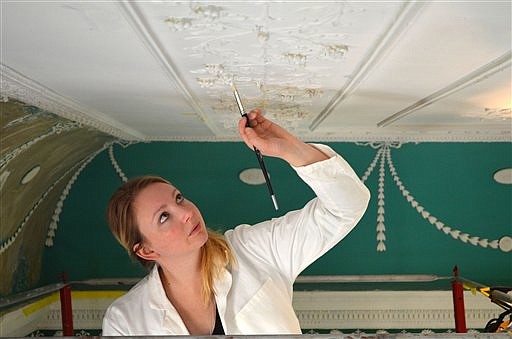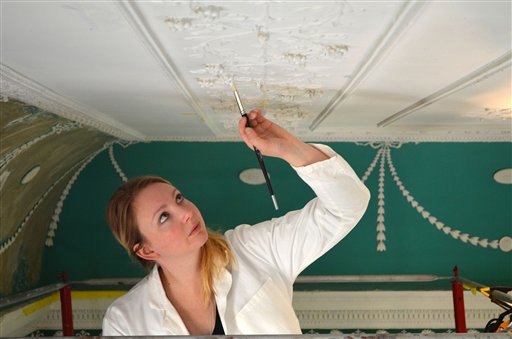MOUNT VERNON, Va. - George Washington ate here, but not nearly as much as we first thought.
The keepers of Washington's Mount Vernon estate on Friday announced a major reinterpretation of the largest room in the Founding Father's riverfront mansion. For decades, interpreters showed the room to tourists as Washington's large dining room, complete with a dining room table front and center.
Upon further review, historians at Mount Vernon have concluded that the room Washington referred to as the "new room" -- added to the mansion at the start of the American Revolution -- was actually more of a multi-purpose salon to impress and entertain visitors. It was only rarely used as a dining room, historians say.
"It's really a visual statement room, a 'wow' room," said Carol Borchert Cadou, Mount Vernon's senior vice president for historic preservations and collections. At nearly 700 feet, the room alone would be larger than the average American home at the time, she noted.
To the degree Washington used the room to make a statement, it showed the ways in which America was carving its own identity while remaining steeped in British cultural influence.
It has a neo-Classical design, similar to English countryside salons that were in vogue at the time. But Washington decorated it with portraits of American landscapes, including Great Falls on the Potomac River, at a time when few others showed an interest in such art. The molded, plaster ceiling depicts agricultural icons like rakes and scythes, reflecting the Washington's interest and abilities in American agriculture.
"It tells us a lot about how he saw America, and how he saw himself," said Thomas Reinhart, the estate's deputy director for architecture.
The room now contains more than 20 paintings and other artifacts that belonged to Washington himself. A yearlong reinterpretation of the New Room will be unveiled to the public on Saturday.
Mount Vernon arrived at the new interpretation following extensive research on multiple fronts. A word search of Washington's online papers found 27 references to the New Room but only one instance in which he called the space a "large dining room."
Visitors to the estate often referred to it as a drawing room or a "magnificent room," but references to a dining room were rare.
For nearly a century, Mount Vernon called the room a banquet hall, and in 1981 reinterpreted it as a "large dining room," seizing on the single reference Washington made as well as a description from a visiting British architect, Benjamin Latrobe.
But curator Susan Schoelwer said the earlier interpretations stem in large part from imposing mores of the time onto the Colonial era. The descriptions as a banquet hall first surfaced in the late 19th century, during the era when Robber Barons and other corporate chieftains had such banquet halls. In the more modern era, the dining-room description was more easily relatable to tourists who might not grasp the notion of a salon-style room, or feel that it was too pretentious for a man of the people like Washington.
"Our job is to introduce people to Washington's world," Schoelwer said.
The estate used science as well as the historical record to re-invent the room -- microscopic analysis of paint fragments allowed them to discover a shade of green derived from a pigment called verditer, which was made at the time by crushing a mineral called malachite into a fine powder.
Mount Vernon possessed three vases that were kept in the room, but some were in bad shape, and had the handles broken off. One handle was uncovered in an archaeological dig, and that handle was used to manufacture a mirror image with a 3-D printer to help restore the vase to its original look.

